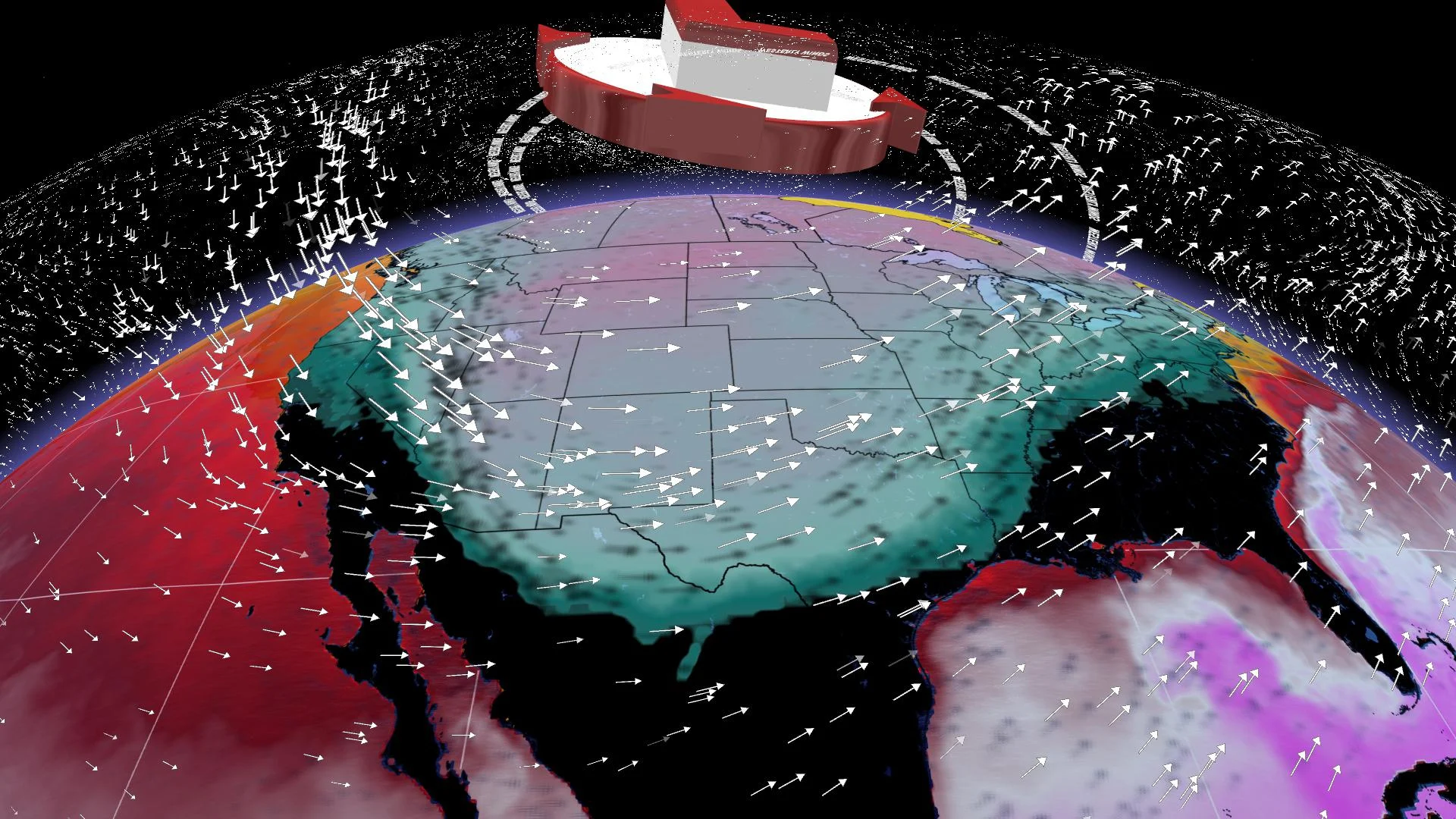
Texas is freezing beneath Arctic air. Is Canada to blame?
The catastrophic deep freeze that has gripped the state may have originated in part far to the north.
The grand winter finale across North America will be remembered for decades to come, as the culmination of several factors led to this spectacular surge of Arctic air down to the Gulf of Mexico, plunging millions into darkness.
MUST SEE: Deep freeze seizes Texas - Some reasons why the storm has been so disruptive
Let's solve this weather mystery by working backwards to unravel the specific events that led to such a prolific surge of Arctic air towards the Gulf of Mexico.
PAST SEVEN DAYS
We'll start easy.
State-of-the-art computer models can track the source region of the cold air using what's known as a 'backwards trajectory' plot. That'll settle it: we'll see if Canada has any played a significant part in this tremendously cold blast of air.
The conduit to flush this record-breaking cold air south? A stout Arctic high enveloped regions east of the Rocky Mountains. Cold, dense air has indeed flowed south like molasses from Canada. Track the three-thousand-kilometre journey below. But how did it arrive on the Prairies?

PAST COUPLE OF WEEKS
For much of December and January, the Pacific jet stream remained turbocharged, flooding the continent with mild air. A dip in the jet stream is required to act as a conduit to transport the cold air south.
Since early February, the atmospheric configuration has aligned to support this. One glance at a popular teleconnection, the Arctic Oscillation, gives us clues to see how wonky and wavy the jet stream has been behaving; it's an outstanding tool to visualize just how predisposed the atmosphere is to shunt frigid air south.
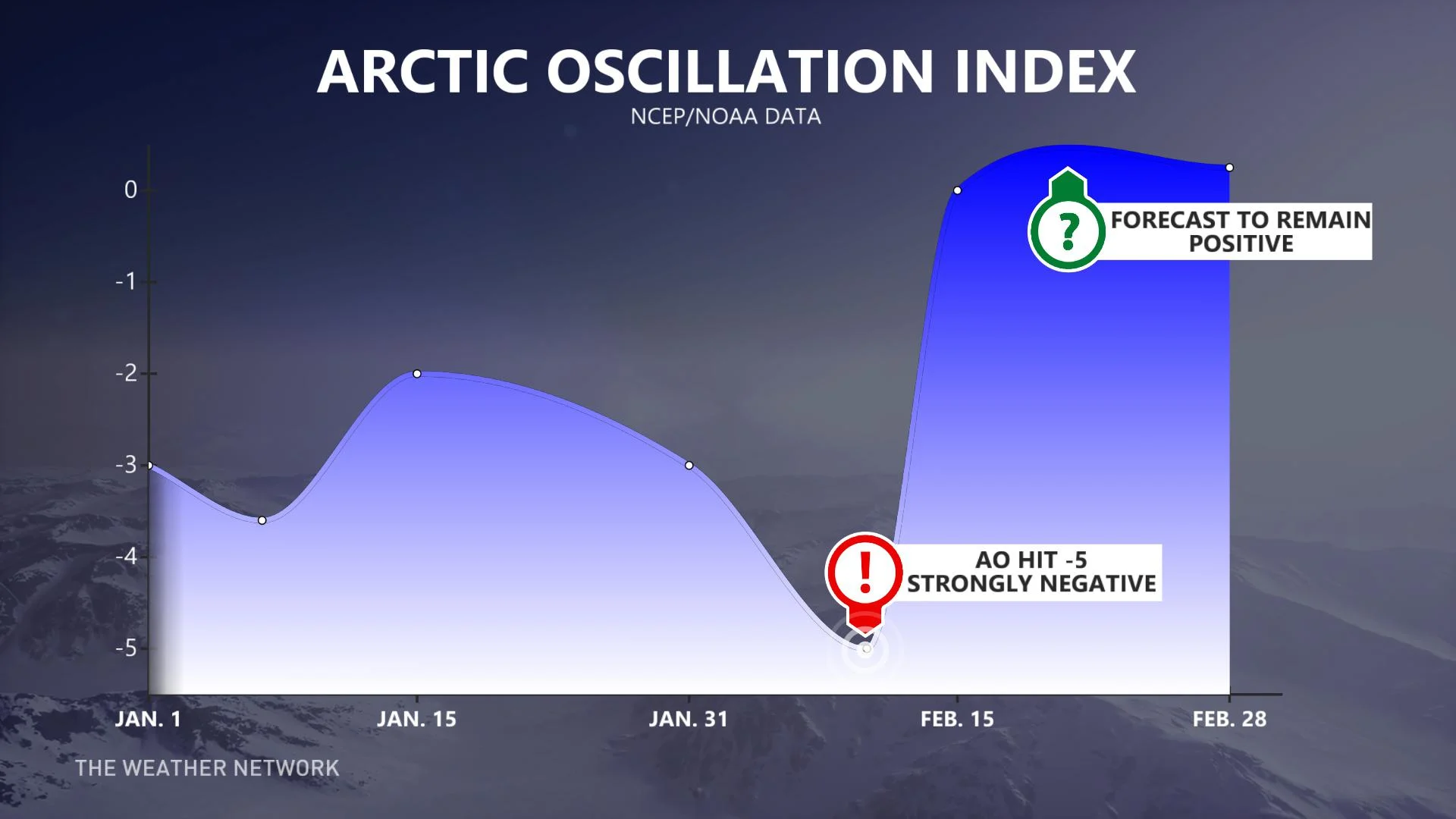
When the Arctic Oscillation is strongly negative, the atmosphere has an abundance of high pressure near the North Pole, with a lower pressure at lower latitudes; this was an atmospheric traffic jam of sorts, as the perfect ingredients came together to trap the cold in for an extended duration.
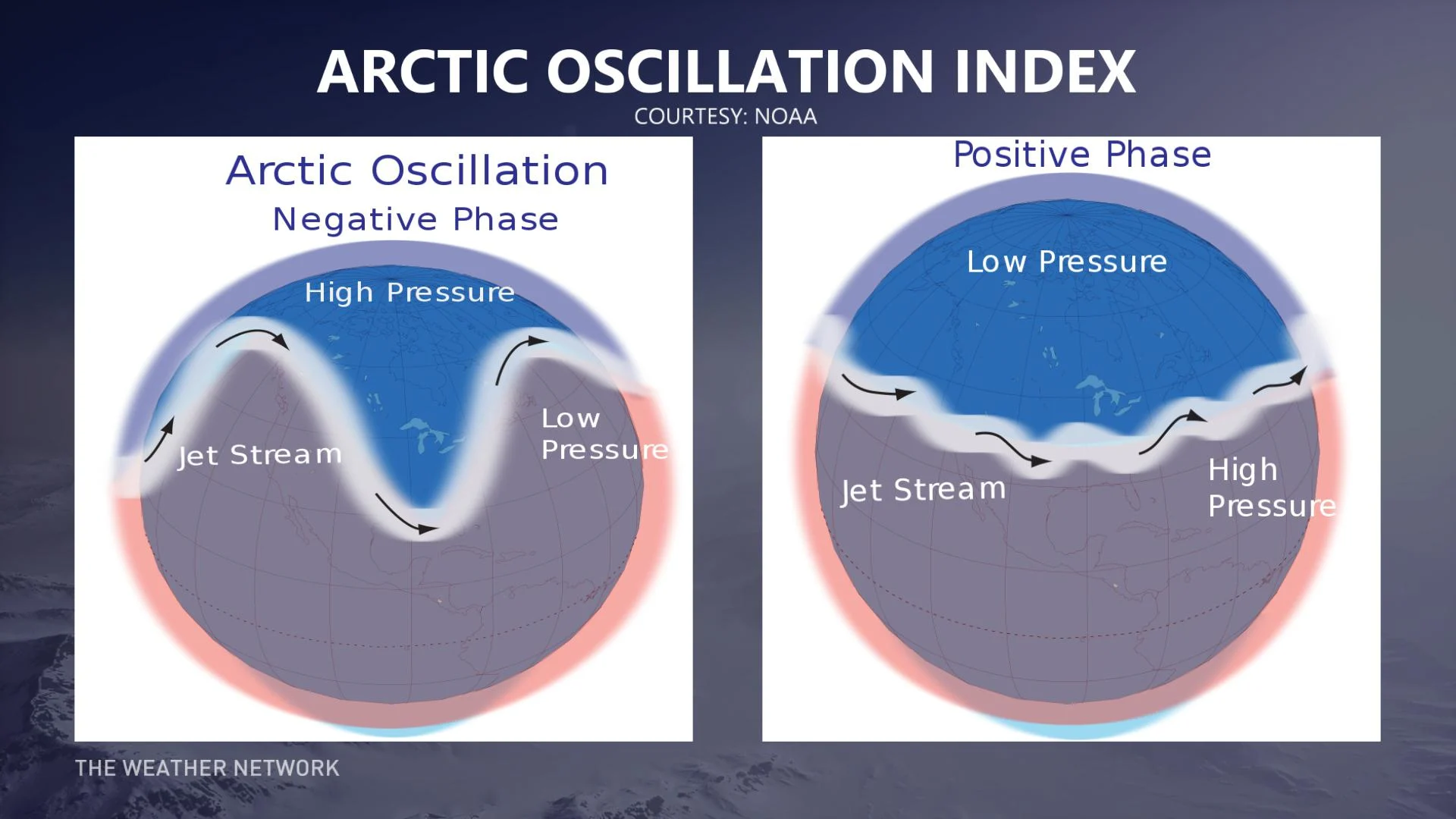
PAST MONTH
It's a bit of a paradox: a weakened polar vortex is a culprit for the coldest air across lower latitudes; a healthy polar vortex is bundled tightly near the pole, leaving southern latitudes mild.
The stratospheric polar vortex has been in tatters since the middle of January. Large atmospheric waves can break the polar vortex into pieces or lobes and even displace it off the pole.
The remnant polar vortex remained displaced over higher latitudes. The result? The highest concentration of cold lingered over Siberia. In fact, record cold plagued Siberia throughout mid-January, with temperatures falling close to -60°C.
That begs the question: What caused the disintegration of the polar vortex?
JANUARY 5TH, 2021
An important date in our quest to solve just why Texas got so cold in the middle of February. The penultimate event on solving this weather, wild goose chase.
On January 5th, the typical westerly winds circling the North Pole 30 km above the surface switched direction. That triggered a sudden stratospheric warming event, a warming of the stratosphere over the pole. The main actor, the polar vortex, is the connection between the highest echelons of the stratosphere to the world of weather in the troposphere.
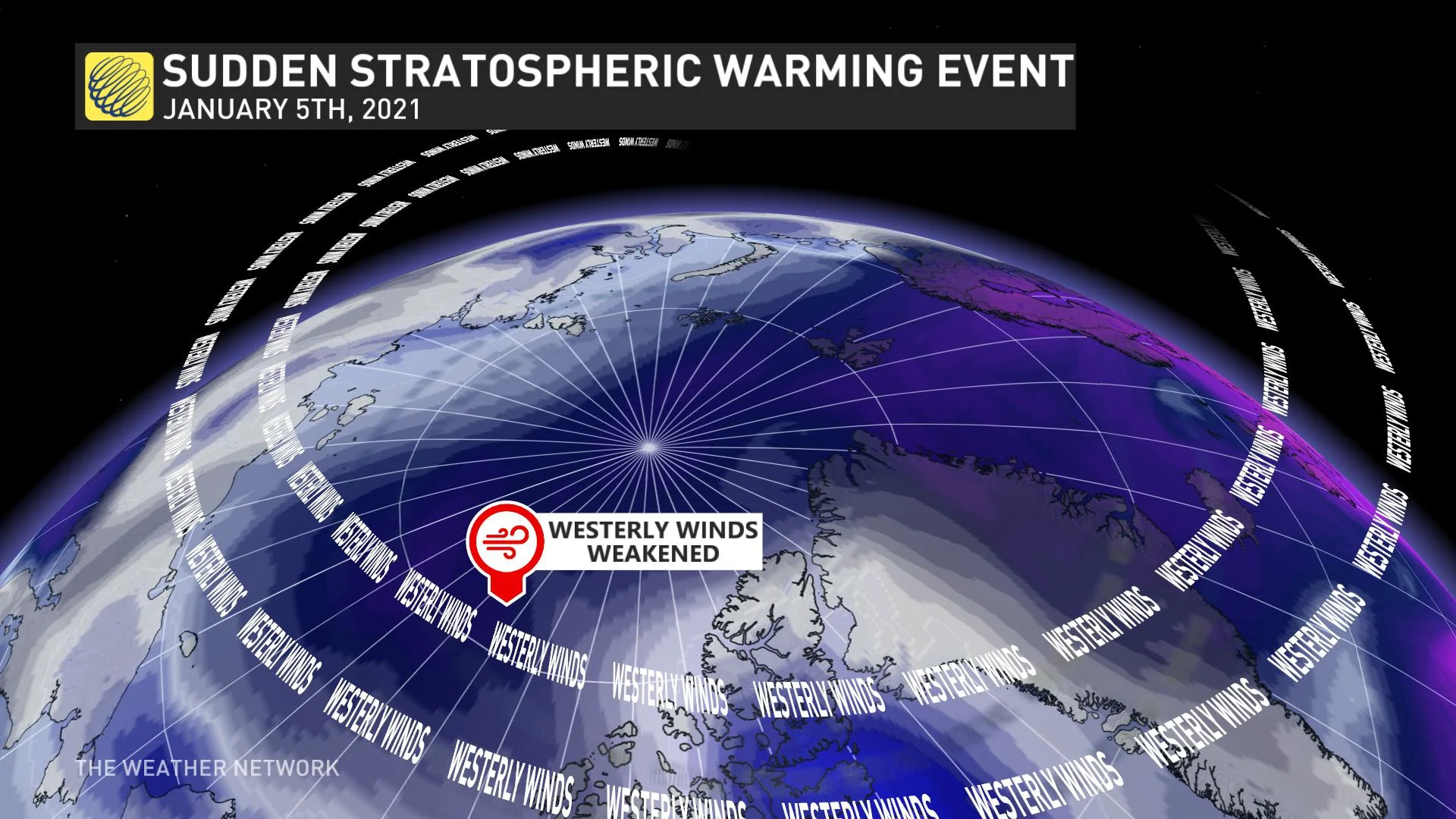
DECEMBER 2020
The winter season commenced with a healthy, strong polar vortex as expected:
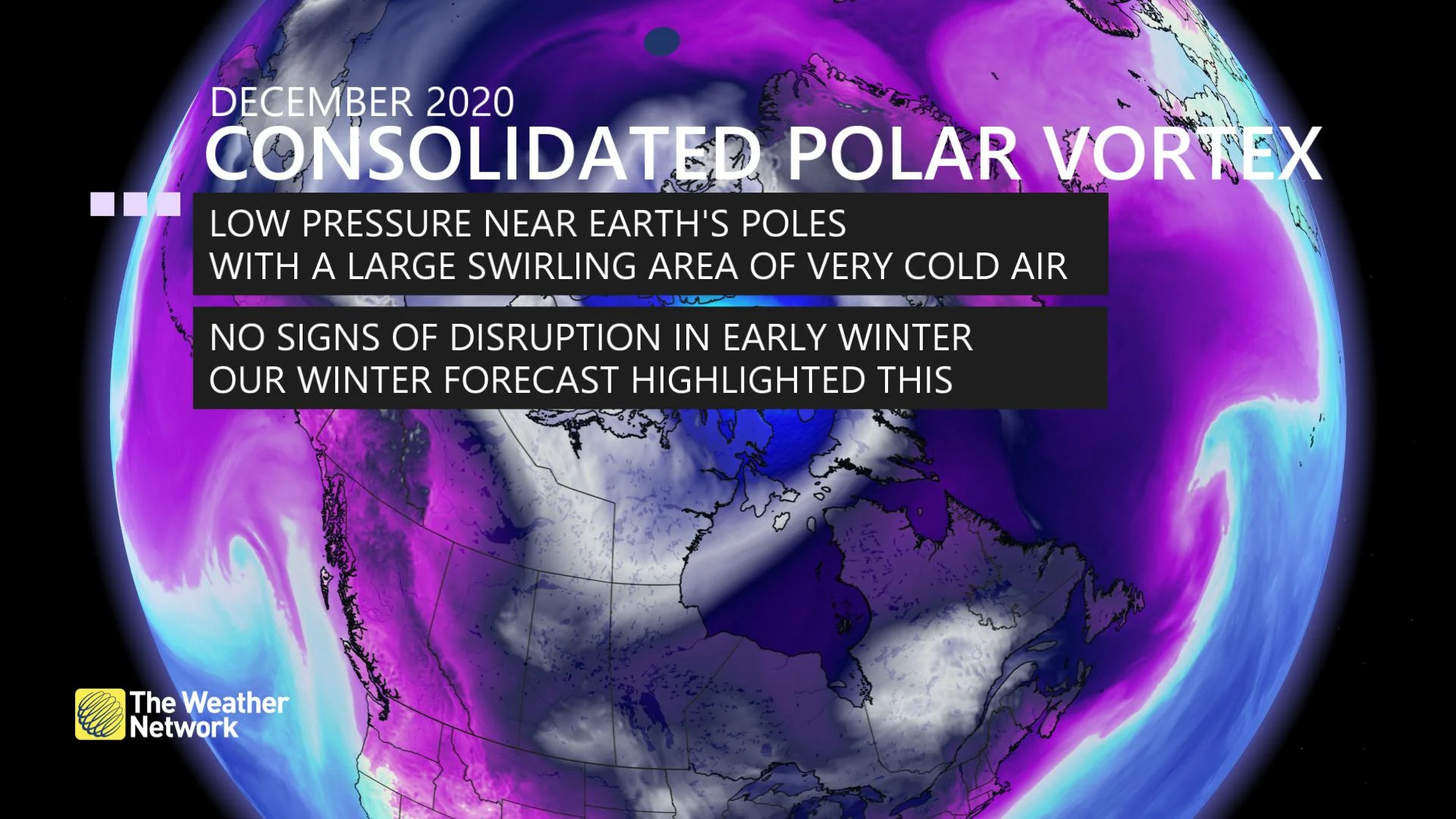
What caused the sudden stratospheric warming event?
Amy Butler, a scientist at NOAA, hypothesized that a robust atmospheric wave built and extended into the stratosphere. A sizable low-pressure signal existed in the North Pacific with high pressure over the North Atlantic. By late December, those strong westerly winds aloft slowly weakened above the pole; this was strongly correlated with temperatures warming aloft.
Remember the record low-pressure system that impacted Alaska on the final day of 2020? That amount of energy traversing the Bering Sea might have had an influence as well, but more research is required.
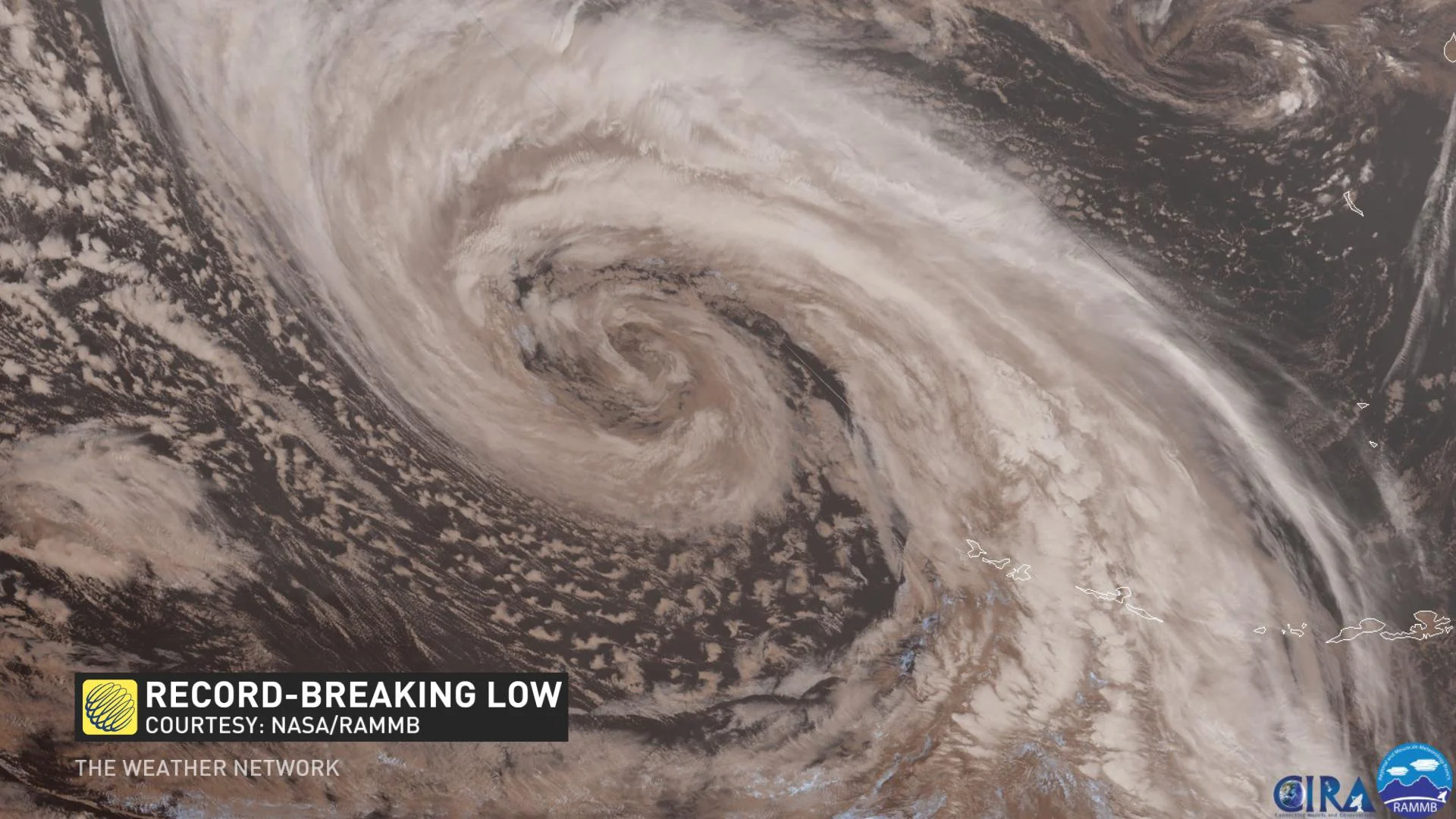
There you have it. The specific chain of events, months in the making, played a pivotal role in the historic cold across the Southern Plains and Deep South of the United States. Millions remain without electricity across Texas as electric companies grapple with unprecedented demand and supply chain issues.






